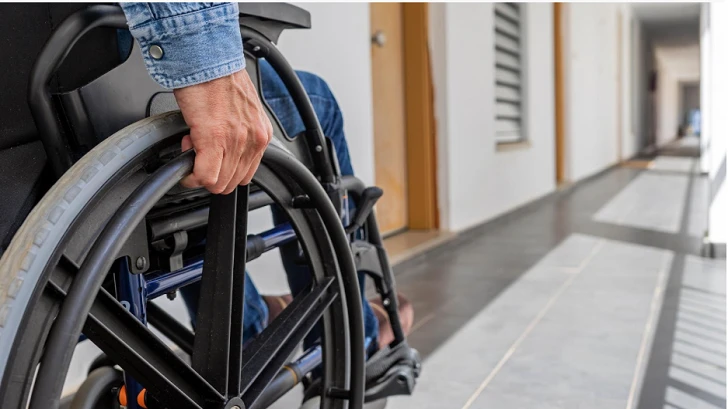- Author: Michael Burry
- Jun 11, 2025
If you have scoliosis, you may qualify for receiving disability benefits if you are unable to work. Scoliosis is categorized by the Social Security Administration (SSA) as a condition of the musculoskeletal system and connective tissue.
In 2021, around 34% of disability beneficiaries cited disorders of the musculoskeletal system and connective tissues as the reason for their disability.
You must make certain to understand the Social Security Administration qualification order for scoliosis if you plan to go on disability for scoliosis. Obtaining disability benefits for scoliosis can be challenging as with any other medical condition. Therefore, understanding the qualifications and the steps that follow is necessary.
What Is Scoliosis?
Scoliosis is a medical condition in which a person's spine curves sideways, forming an “S” or “C” shape instead of a straight line. It can range from mild to severe and may cause back pain, posture issues, or, in serious cases, affect lung and heart function.
Is Scoliosis A Disability?
Yes, Scoliosis can be considered a disability. However, it depends on the severity of the physical and functional limitations. Some physical limitations for spine disorders are long-term pain while standing or sitting, which restricts mobility.
The Social Security Administration (SSA) has included scoliosis in the category of musculoskeletal system (listing 1.00) and connective tissues, and it is not mentioned in the SSA’s Blue Book listing.

- Idiopathic Scoliosis
- Congenital Scoliosis
- Neuromuscular Scoliosis
- Degenerative Scoliosis
- Functional Scoliosis
Symptoms Of Scoliosis
The symptoms of scoliosis can vary depending on the severity of the curvature. Common signs and symptoms may include:
- Uneven Shoulders
- Asymmetric Waist
- Uneven Hips
- Leaning to One Side
- Back Pain
- Limited Mobility
- Changes in Gait
- Cosmetic Changes
Can You Get Disability Benefits For Scoliosis?
You may be eligible for disability benefits if your scoliosis makes it impossible for you to work, causes pain in your spine, unable to walk, or breathing difficulty. Even if your scoliosis is severe, the process of applying for and securing disability benefits is challenging. Applicants must meet strict criteria and provide ample medical documentation
8 Questions You Must Answer Before Applying For Disability BenefitsSome helpful questions that may help you speed up your application procedure are as follows:
|
SSA’s Eligibility Criteria For Getting Disability With Scoliosis
To prove to the SSA that you are eligible to get disability benefits, you need to prove that your scoliosis is severe and long-lasting. There must be medical evidence and other records that will help to prove that your disability prevents you from working.
The medical evidence may include the following:
- Treating doctor’s prescription
- Medical records showing how you are responding to medications and treatment
- Detailed notes showing how scoliosis is impacting your day-to-day activities
- Imaging tests results
Other additional factors may include:
- Your scoliosis prevents you from walking for a longer time
- You are struggling to stand up or sit for a long time
- Unable to perform daily activities as your scoliosis limits your capability
- Your disability is limiting your motion range
- You are consulting a spine specialist, chiropractor, pain management specialist, or physical therapist to treat your scoliosis
- Use of assistive devices such as braces or require any specific injections or therapy
- Your condition requires spinal fusion surgery
What Happens If Your Scoliosis Meets The Criteria Of The SSA?
If you meet the SSA eligibility criteria you must apply as soon as possible.
-
You must apply if you have been diagnosed with scoliosis and your symptoms are making it impossible for you to engage in work.
-
You must wait and apply later if you are still working and your symptoms of scoliosis are mild or moderate which will improve with regular medical treatment.
-
You must not apply if you are earning at least or more than $1,550 per month, your scoliosis disorder is being managed by the treatment and you are working.
What Types Of Disability Benefits Can You Apply For?
There are two types of disability benefits for which you can apply for:
- Social Security Disability Insurance (SSDI)
- Supplemental Security Income (SSI)
They both are government programs that provide support to Americans who are unable to work due to their severe medical condition. Some people may qualify for both while most people may be eligible for either of the two instead of both. SSDI is beneficial for individuals who have worked for at least 5 of the 10 years and are paying their taxes.
On the other hand, SSI is beneficial for those who have low-income resources and assets such as property and savings. Both programs comprise health insurance, such as Medicaid for SSI and Medicare for SSDI.
What Is The Disability Check For Scoliosis?
The average amount you may expect to receive each month in disability benefits for scoliosis is $1,427.22. There's a chance you could receive more than that for your scoliosis, though the maximum monthly amount you can receive as of 2024 is $3,822 for SSDI and $943 for SSI.
These payments apply regardless of which condition you apply with and whether you decide to apply with one condition or multiple.
Learn more about SSDI vs. SSI.
What Happens If Your Scoliosis Doesn’t Meet The Criteria?
If your initial application gets denied, you may file an appeal. Most applications get denied during the initial phase. If you think you are not meeting the criteria mentioned in the Blue Book of the SSA, you may still apply by consulting a disability lawyer. They may help you gather the necessary documentation and other additional information to prove your condition before the SSA.
FAQs on scoliosis disability
Can scoliosis be considered a disability?
Yes, scoliosis may qualify as a disability if it severely limits your ability to perform daily activities or work.
Does scoliosis qualify for Social Security Disability?
Scoliosis may qualify for SSDI if the curvature of the spine causes significant functional limitations and meets SSA criteria.
What symptoms of scoliosis can make it disabling?
Severe spinal curvature, chronic pain, breathing difficulties, and mobility issues can make scoliosis disabling.
How does the SSA evaluate scoliosis for disability benefits?
The SSA considers medical records, imaging reports, and functional limitations to determine if scoliosis meets disability criteria.
Is surgery required for scoliosis to be considered a disability?
No, surgery is not always required. Disability is based on severity and functional impairment, not just treatment.
Can adults with scoliosis get disability benefits?
Yes, adults with severe scoliosis that affects work or daily living may qualify for Social Security disability benefits.
How can scoliosis affect daily life?
Severe scoliosis can cause chronic pain, limited mobility, difficulty standing or sitting, and reduced ability to work.


